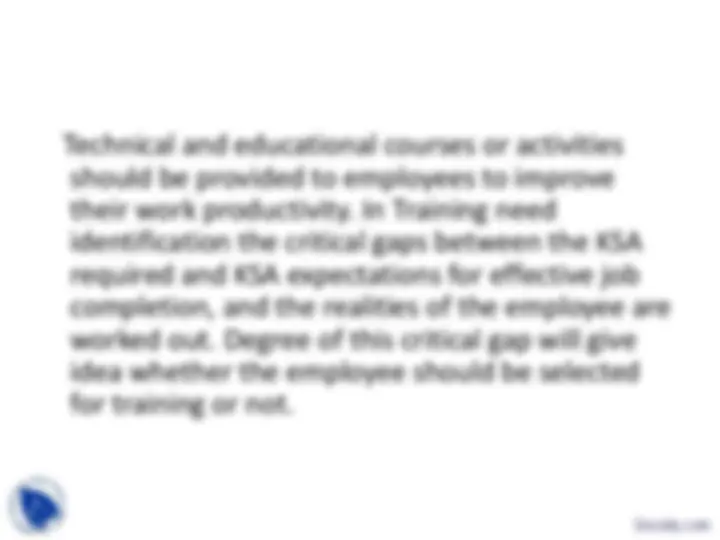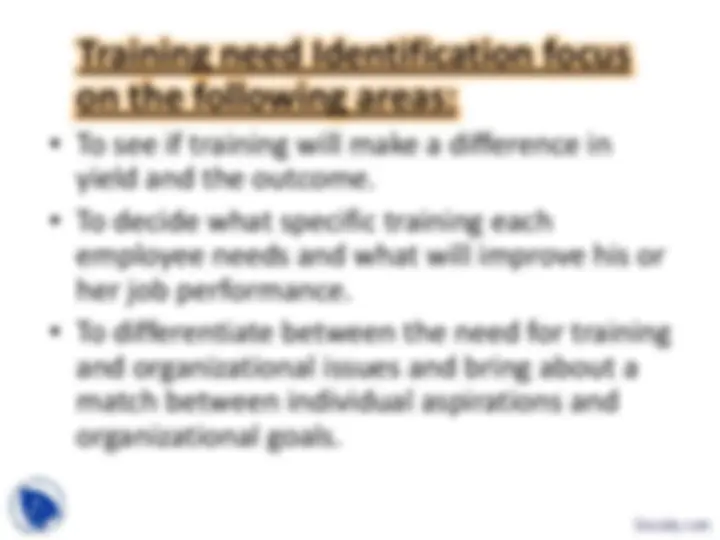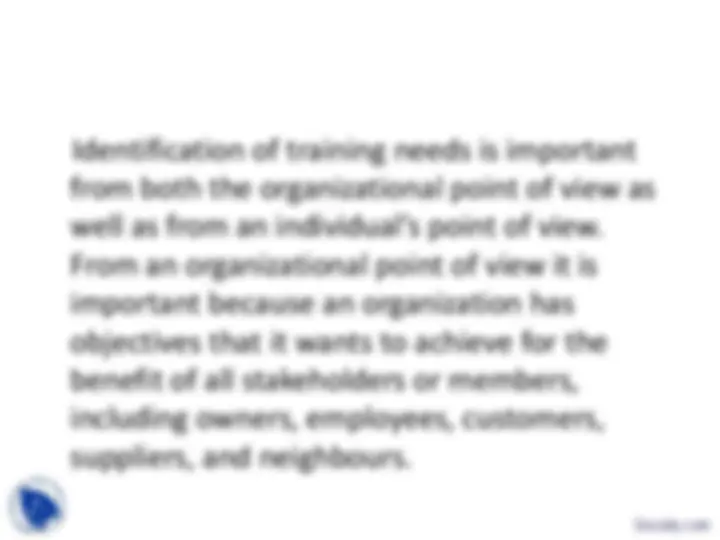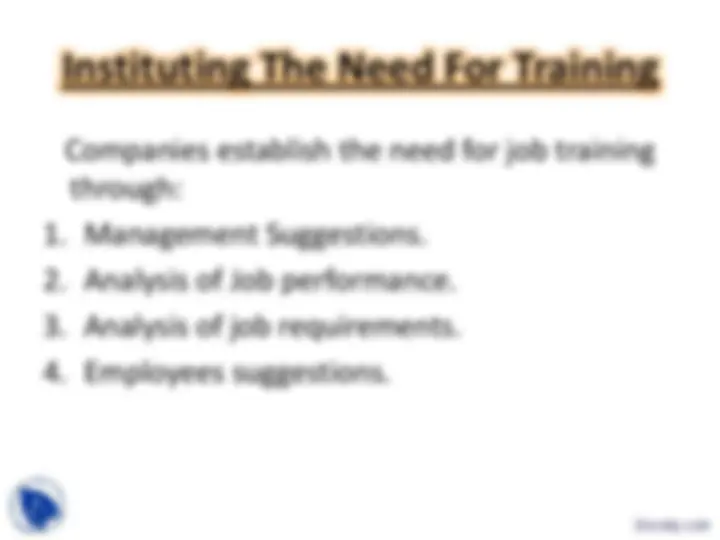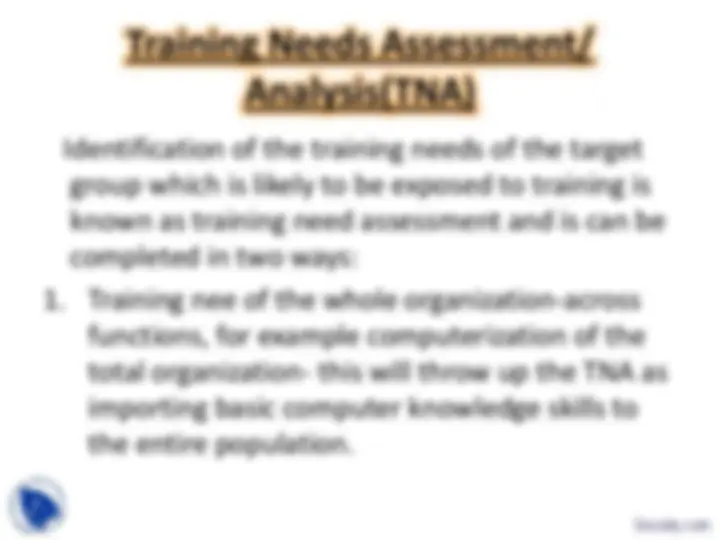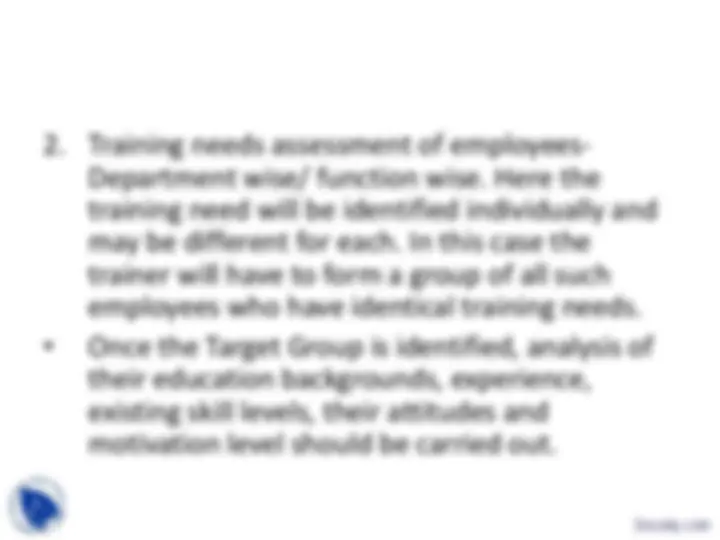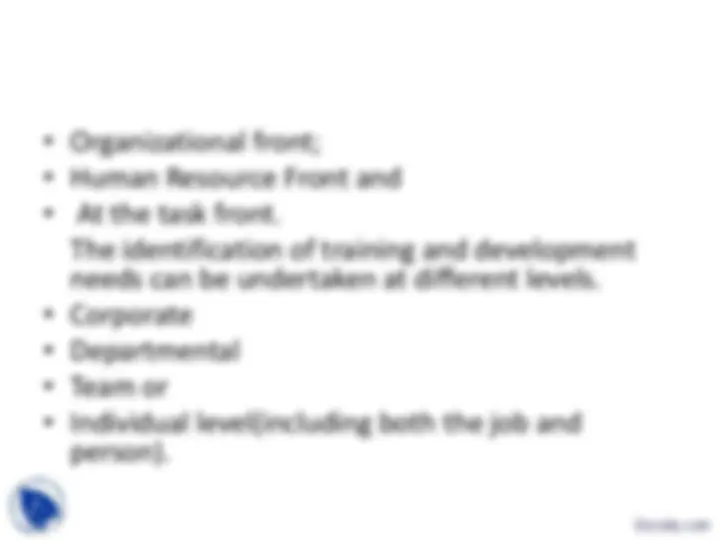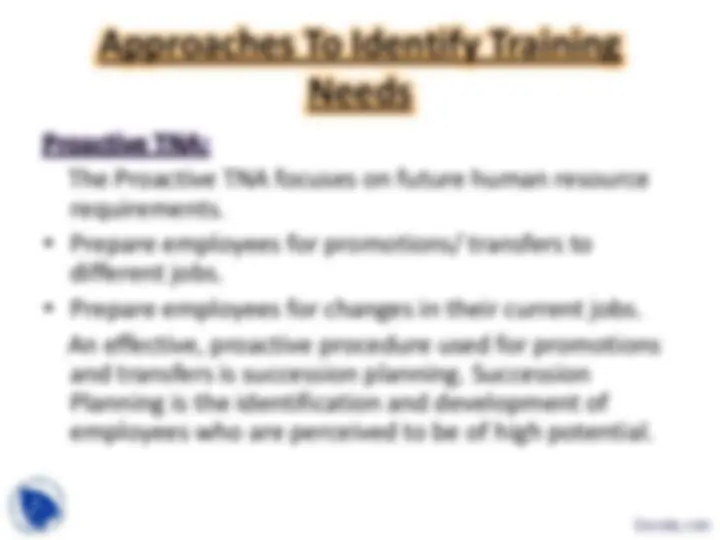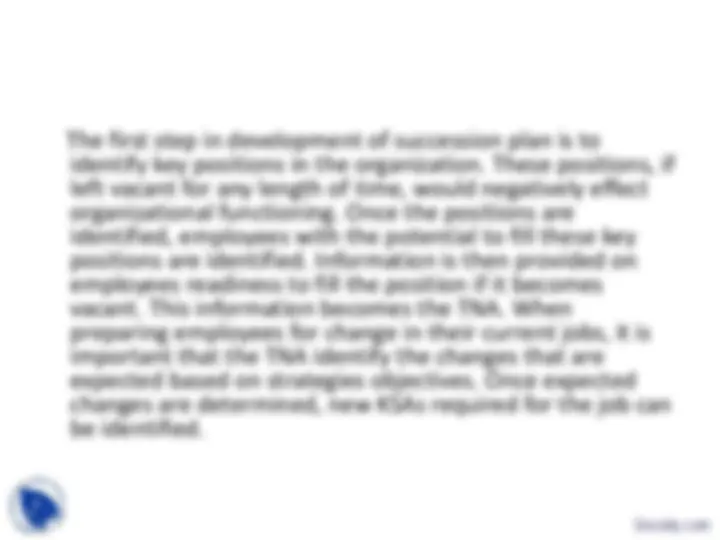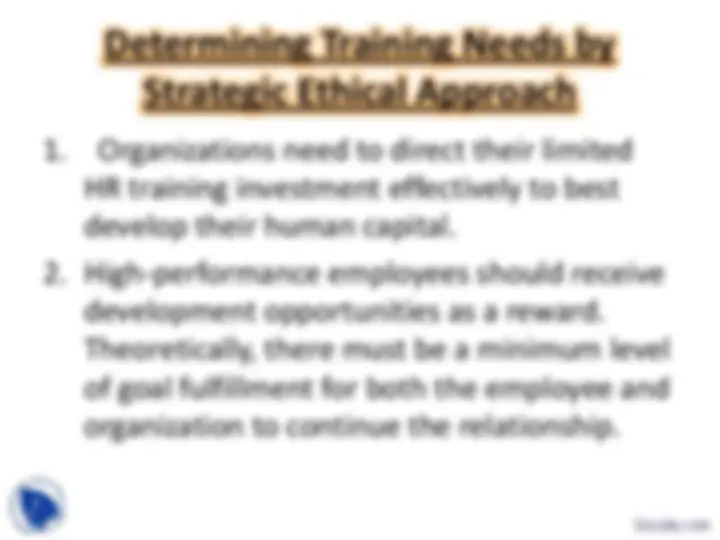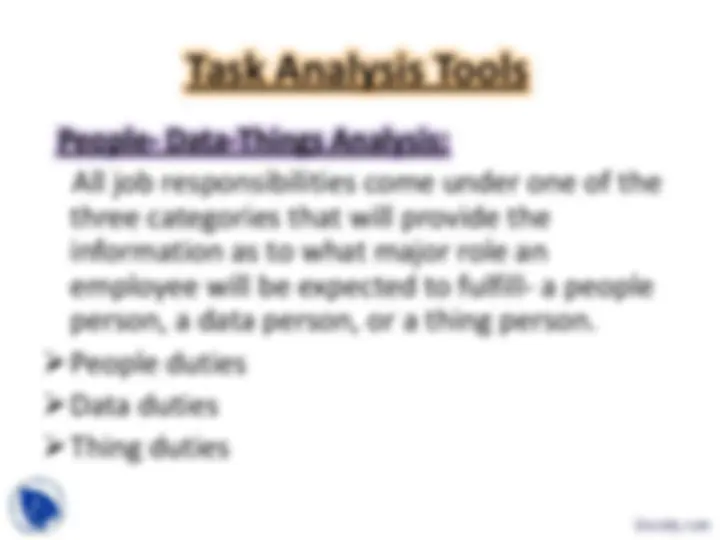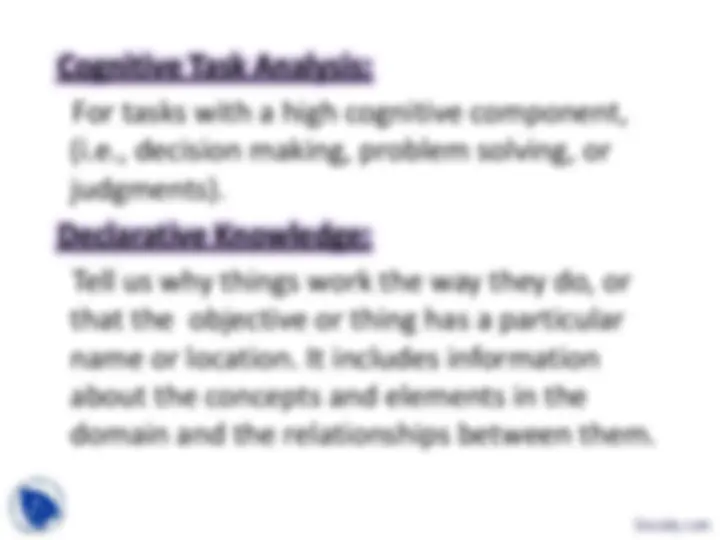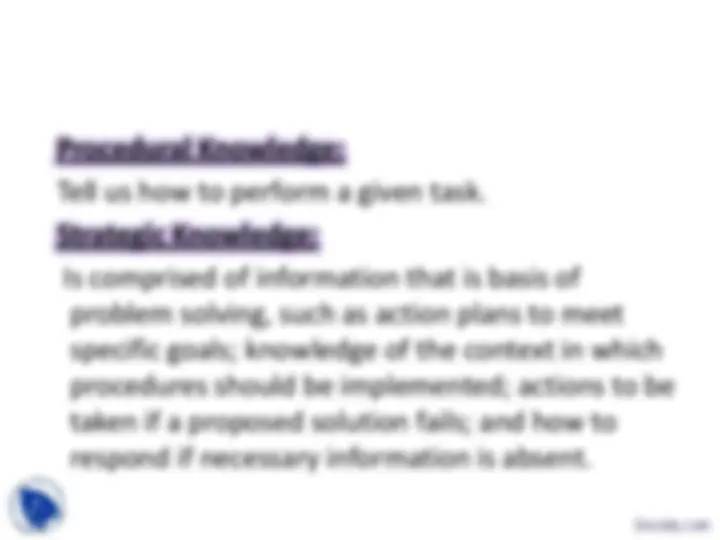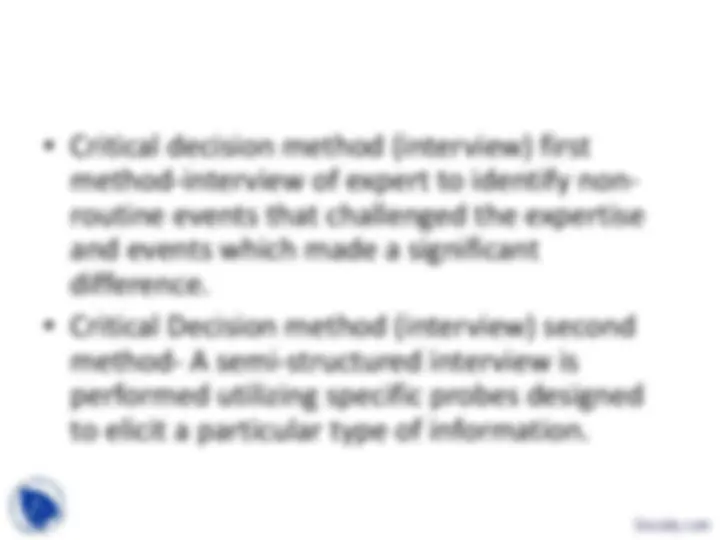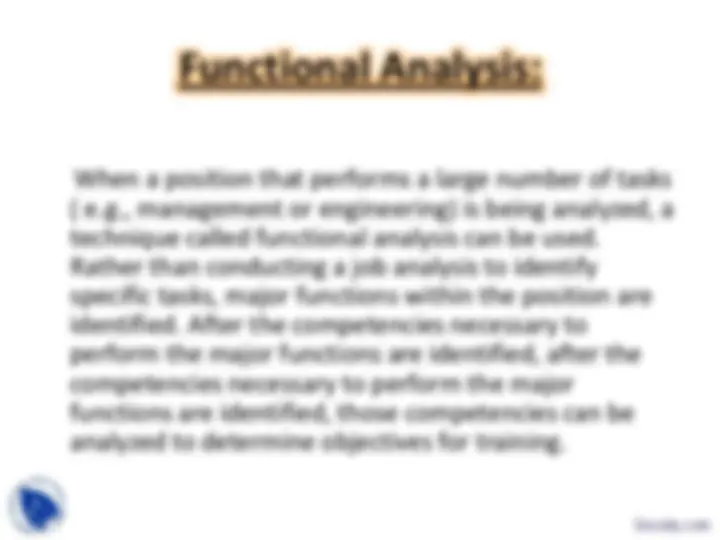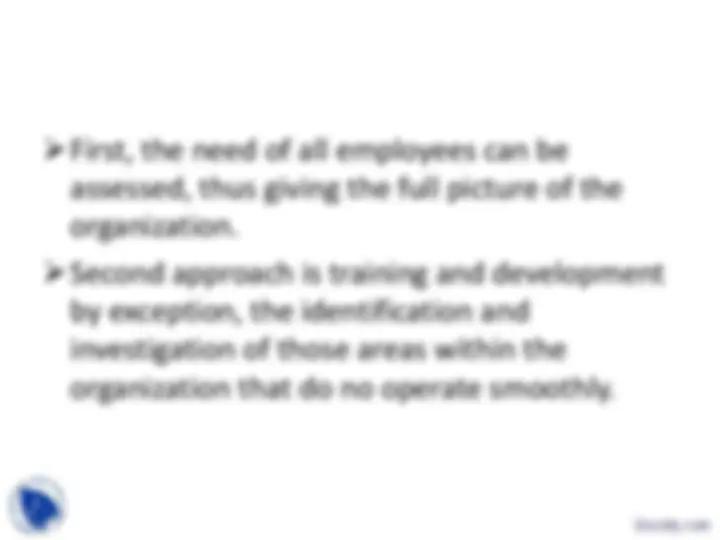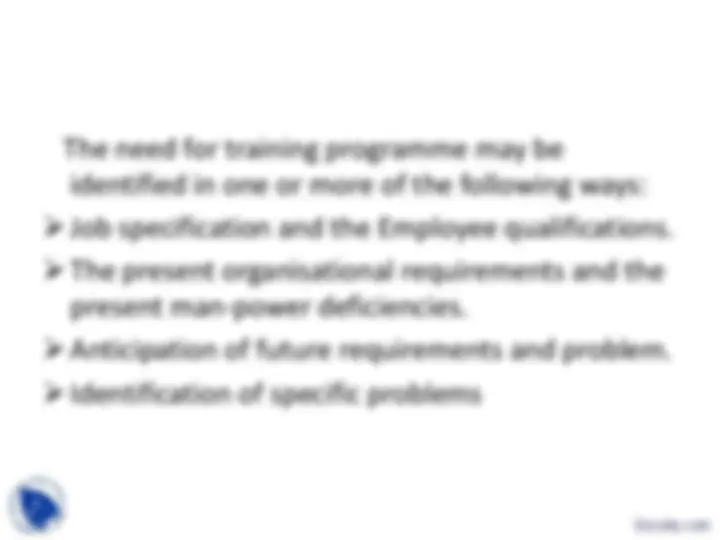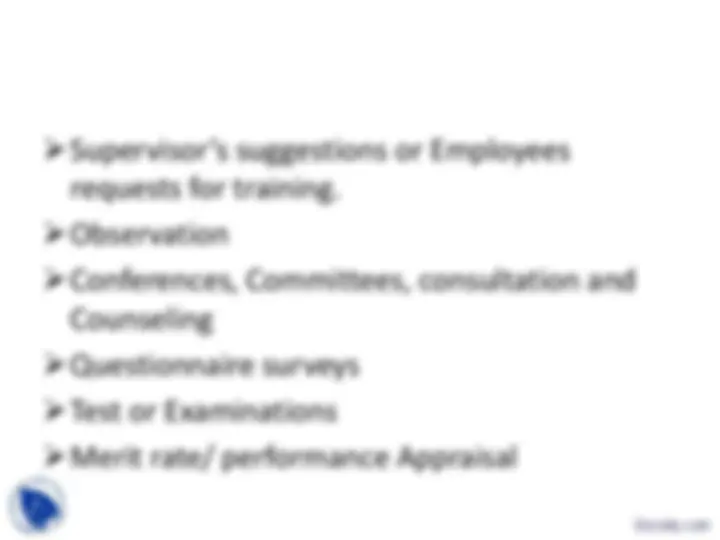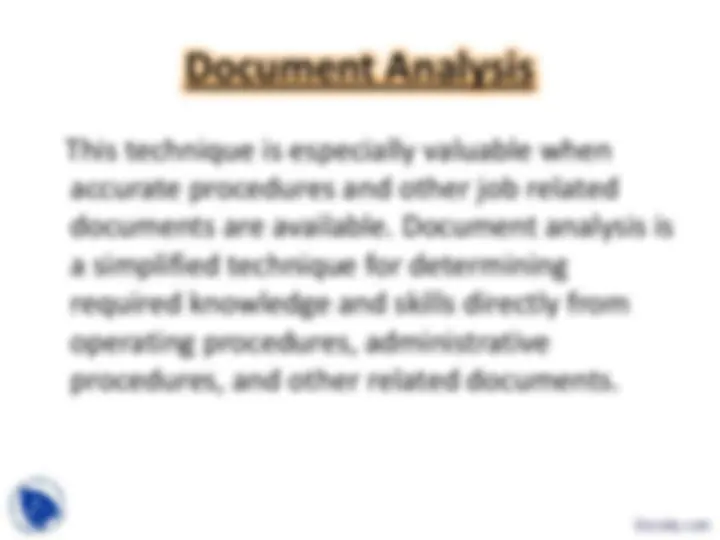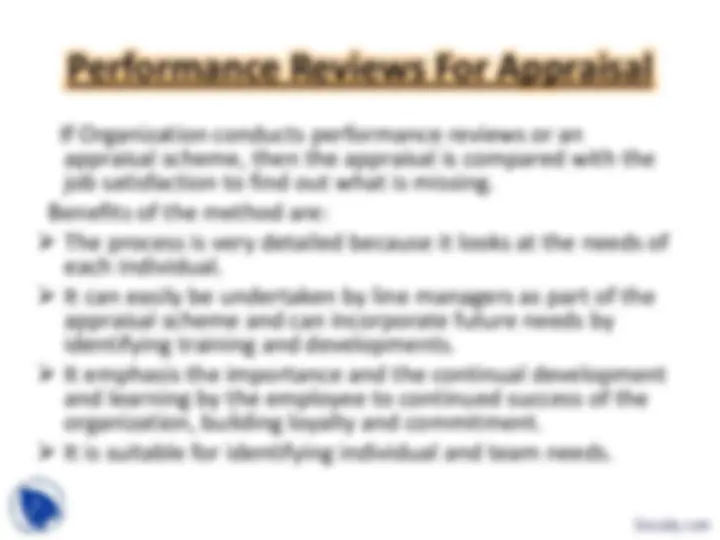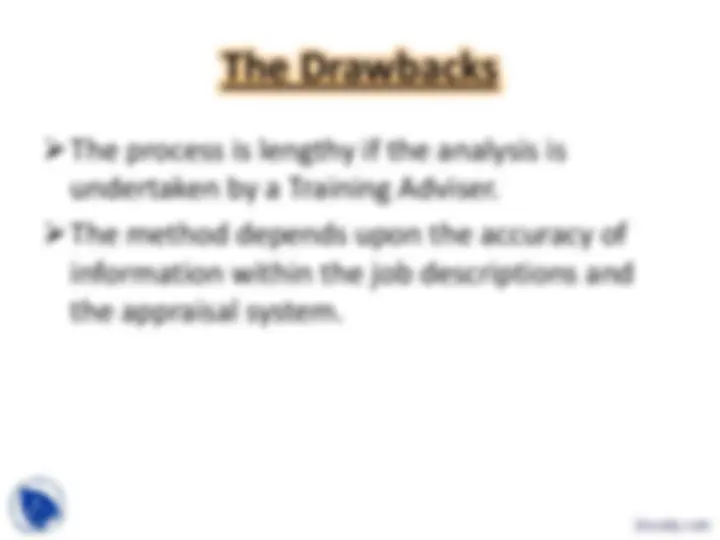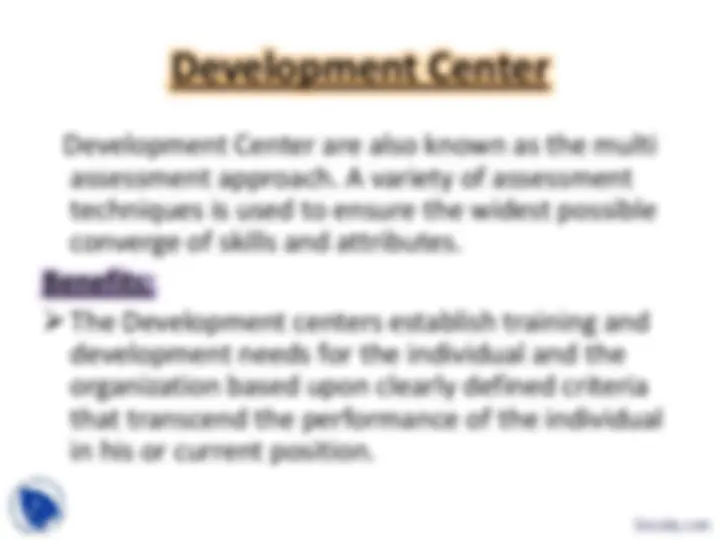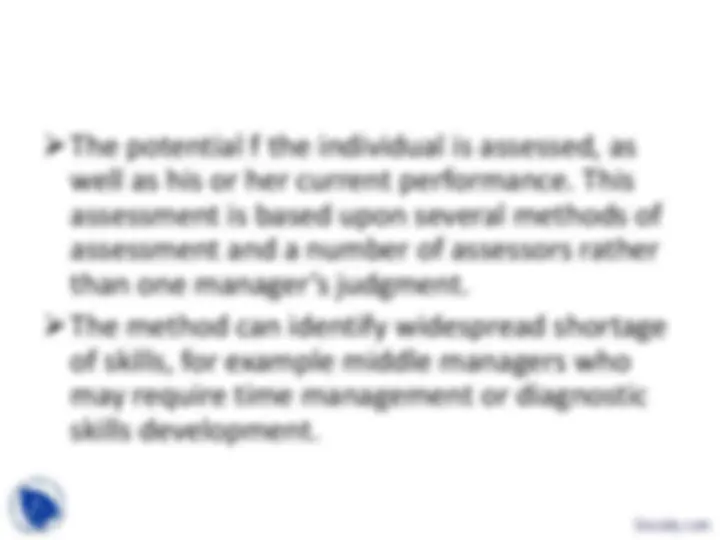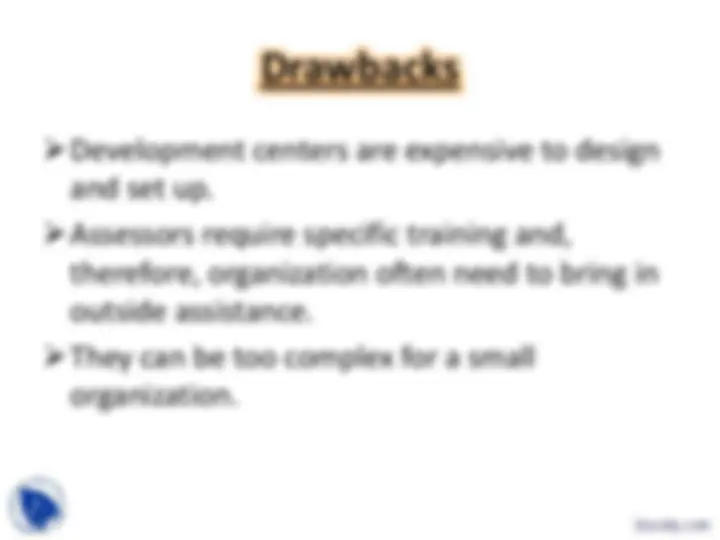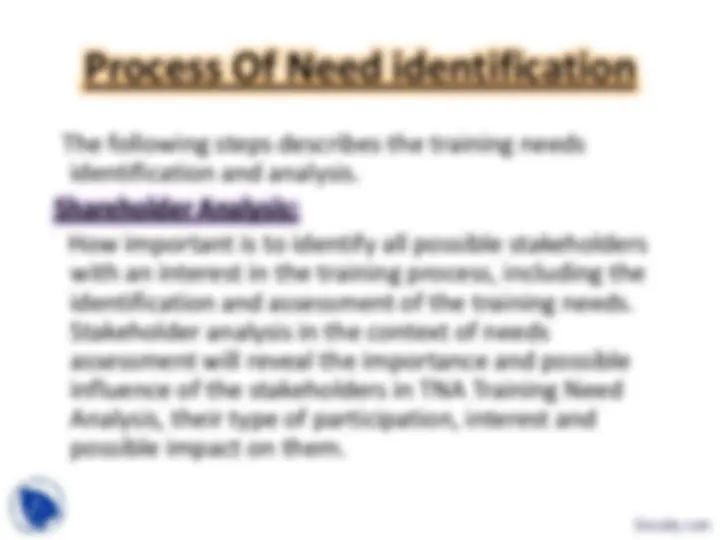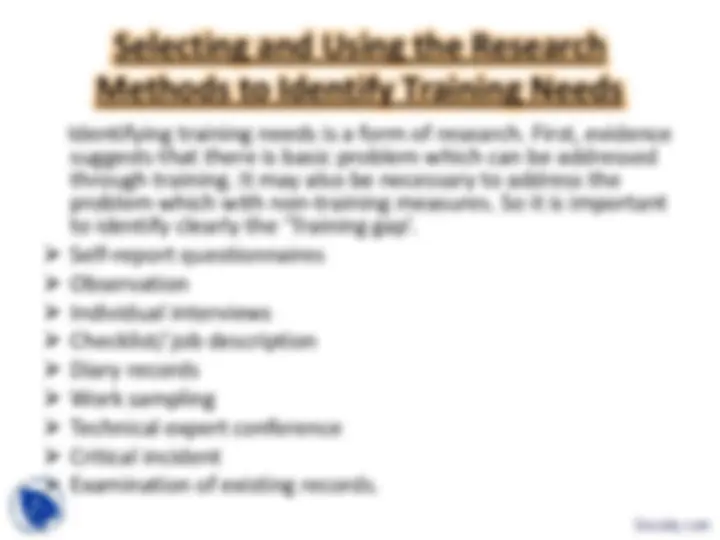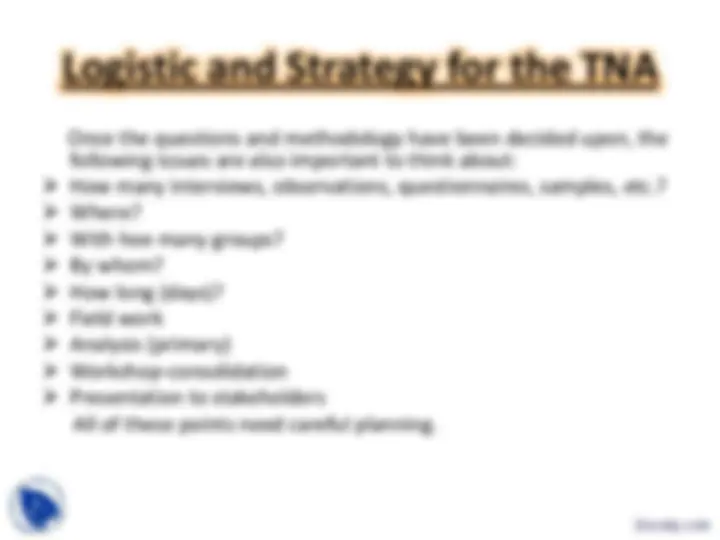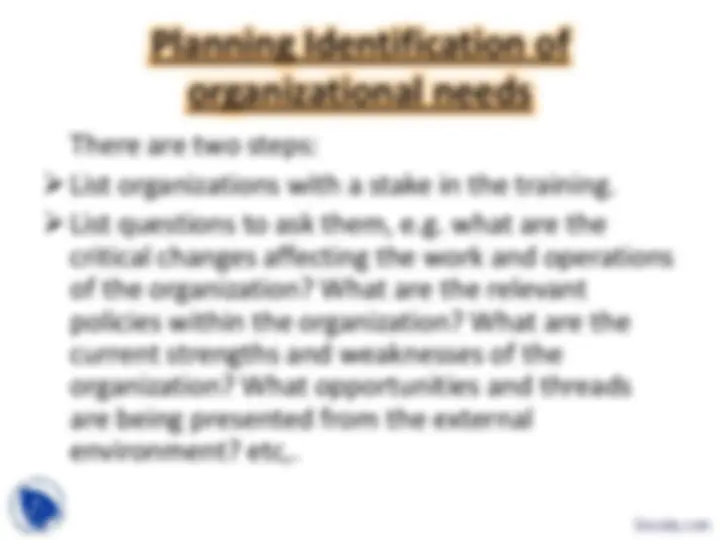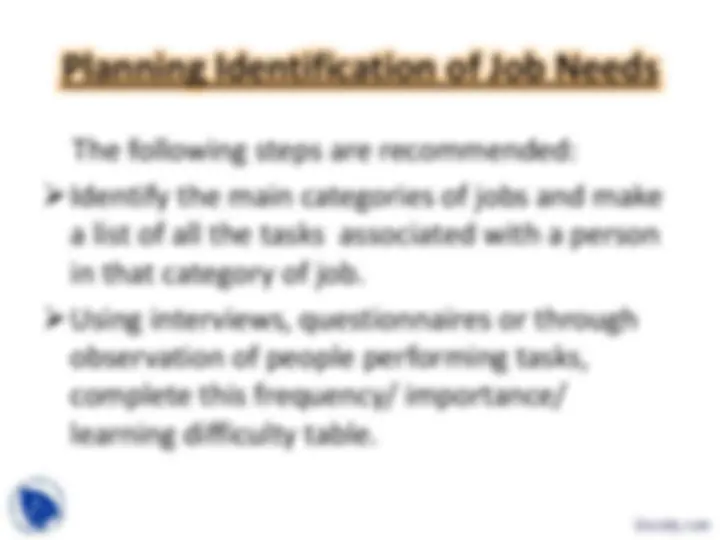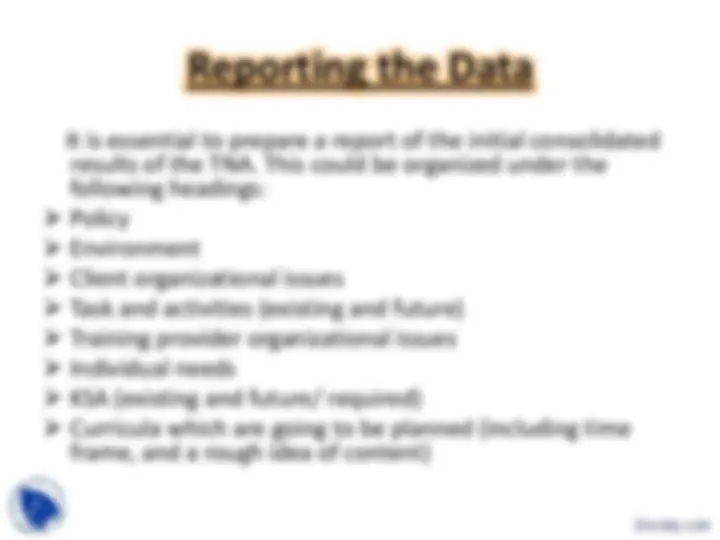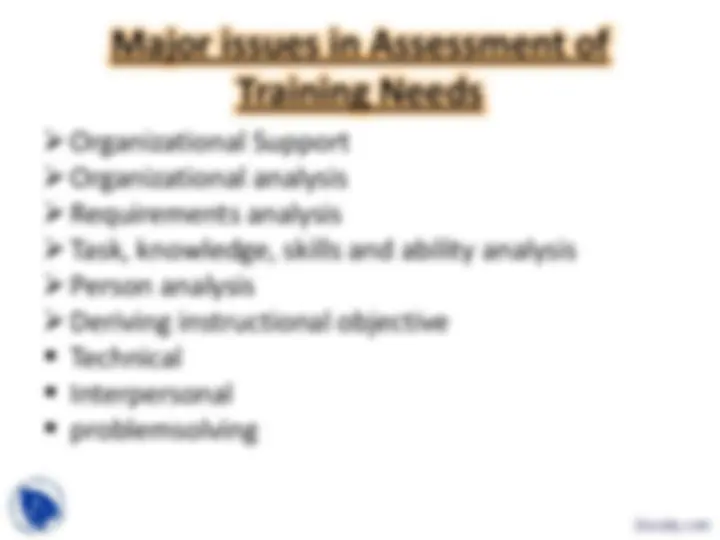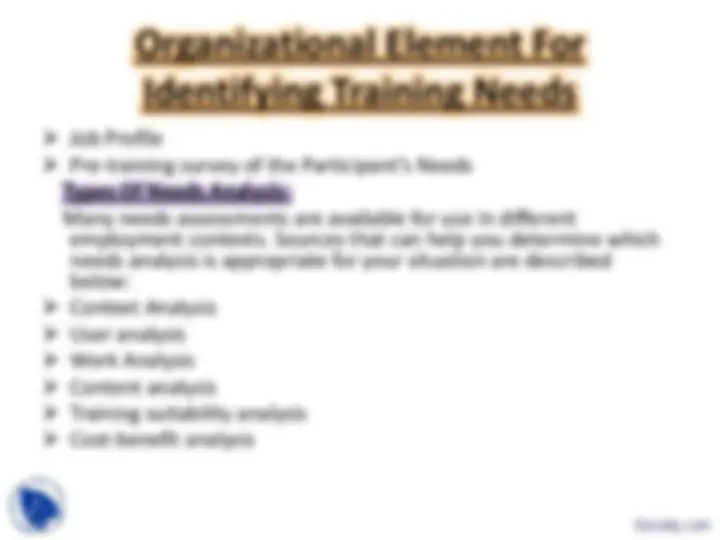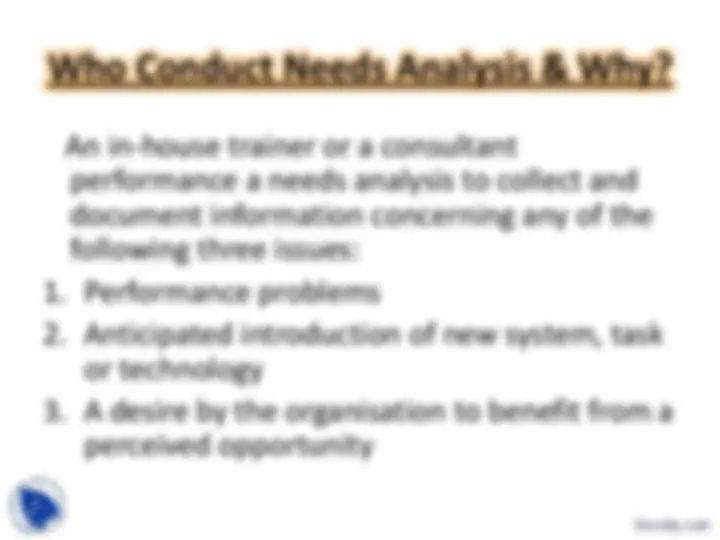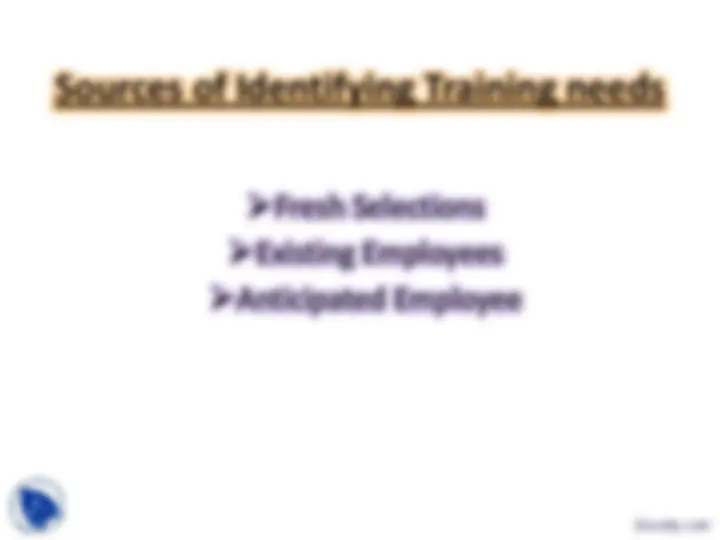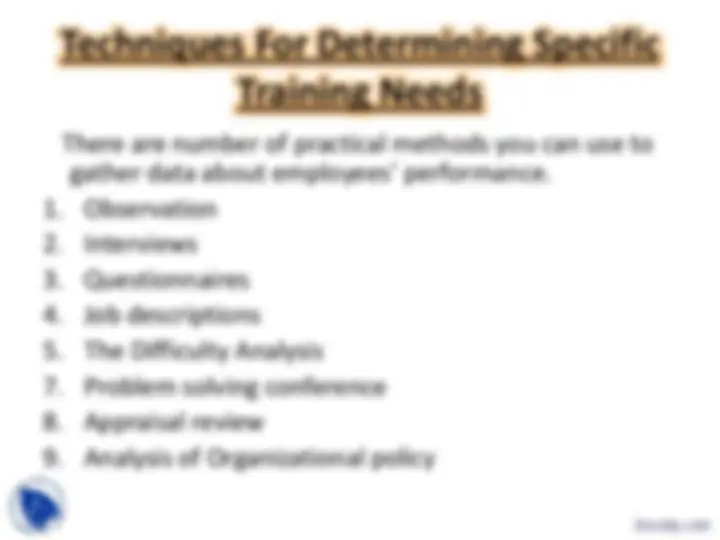Download Training Need Identification-Training and Development-Lecture Slides and more Slides Training and Development in PDF only on Docsity!
Training Need Identification
Need For training:
In the present day business, the element of Human Resource is one of the discipline which drive business for competitiveness. To achieve this, training is very important. Proficient employees will not remain competent forever. This skills can deteriorate; technology may make their skills obsolete; the organization may move into new areas, changing the type of jobs that exist and the skills necessary to do them.
Training need identification is the process of
comparing the present performance level of
knowledge, skill, attitude and human
relational capabilities of the employee/
manager with requisite level of knowledge,
skill, attitude (KSA) and human relational
capabilities for working efficiently on the job.
Training need identification is a tool utilize to
identify what optimum skills.
Training need Identification focus on the following areas:
- To see if training will make a difference in
yield and the outcome.
- To decide what specific training each
employee needs and what will improve his or
her job performance.
- To differentiate between the need for training
and organizational issues and bring about a
match between individual aspirations and
organizational goals.
Identification of training needs is important
from both the organizational point of view as
well as from an individual’s point of view.
From an organizational point of view it is
important because an organization has
objectives that it wants to achieve for the
benefit of all stakeholders or members,
including owners, employees, customers,
suppliers, and neighbours.
Factors Generate the Need For Training
Specially the need for training arises due to the following reasons.
- To match the employee specifications with the job requirements and organizational needs.
- Organizational Viability and the transformation process.
- Technological Advances
- Organizational Complexity.
- Change in the job assignment.
Instituting The Need For Training
Companies establish the need for job training
through:
1. Management Suggestions.
2. Analysis of Job performance.
3. Analysis of job requirements.
4. Employees suggestions.
- Training needs assessment of employees- Department wise/ function wise. Here the training need will be identified individually and may be different for each. In this case the trainer will have to form a group of all such employees who have identical training needs.
- Once the Target Group is identified, analysis of their education backgrounds, experience, existing skill levels, their attitudes and motivation level should be carried out.
- Identify the gaps (of each participant in the
group) which need to be bridged through
training.
- Development specific training objectives and
targets for bringing about measurable
improvement in their performance levels and
enhancement in job-related knowledge.
- Organizational front;
- Human Resource Front and
- At the task front.
The identification of training and development needs can be undertaken at different levels.
- Corporate
- Departmental
- Team or
- Individual level(including both the job and person).
Approaches To Identify Training Needs
Proactive TNA:
The Proactive TNA focuses on future human resource requirements.
- Prepare employees for promotions/ transfers to different jobs.
- Prepare employees for changes in their current jobs.
An effective, proactive procedure used for promotions and transfers is succession planning. Succession Planning is the identification and development of employees who are perceived to be of high potential.
Organizational Analysis
The proactive approach starts with the
strategic plan and objectives. The analyst tries
to determine the best fit between the
organization’s current internal environment
(structure, policies, procedures, etc) and the
future expectations.
Person Analysis
Assessment of the person is identifiable for
the proactive or reactive TNA, and so the
information presented later on person need
analysis may be referred.
Task Analysis Tools
People- Data-Things Analysis:
All job responsibilities come under one of the
three categories that will provide the
information as to what major role an
employee will be expected to fulfill- a people
person, a data person, or a thing person.
People duties
Data duties
Thing duties
Cognitive Task Analysis:
For tasks with a high cognitive component,
(i.e., decision making, problem solving, or
judgments).
Declarative Knowledge:
Tell us why things work the way they do, or
that the objective or thing has a particular
name or location. It includes information
about the concepts and elements in the
domain and the relationships between them.

